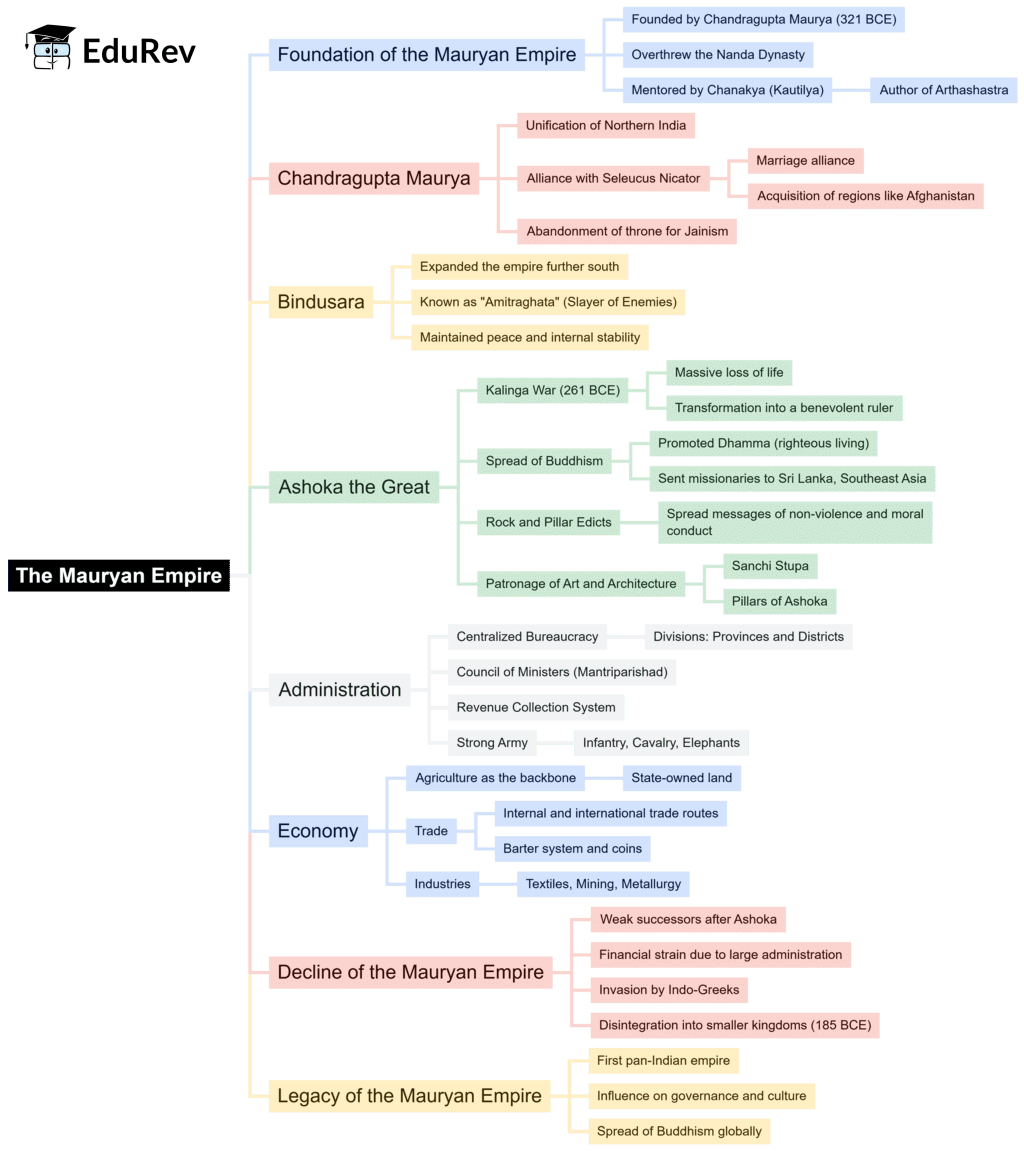UPSC Exam > UPSC Notes > History for UPSC CSE > Mind Map: The Mauryan Empire
Mind Map: The Mauryan Empire | History for UPSC CSE PDF Download

The document Mind Map: The Mauryan Empire | History for UPSC CSE is a part of the UPSC Course History for UPSC CSE.
All you need of UPSC at this link: UPSC
|
210 videos|855 docs|219 tests
|
FAQs on Mind Map: The Mauryan Empire - History for UPSC CSE
| 1. What were the main achievements of the Mauryan Empire? |  |
Ans. The Mauryan Empire, established in 322 BCE by Chandragupta Maurya, is noted for several key achievements. These include the unification of most of the Indian subcontinent under a centralized administration, the promotion of trade and economic prosperity, and the establishment of an efficient bureaucratic system. Additionally, Emperor Ashoka, one of its most famous rulers, is known for his promotion of Buddhism, the spread of non-violence, and the establishment of the Edicts of Ashoka, which emphasized moral governance and social welfare.
| 2. How did Ashoka contribute to the spread of Buddhism? |  |
Ans. Ashoka played a pivotal role in the spread of Buddhism both within and beyond India. After his conversion to Buddhism following the Kalinga War, he adopted a policy of Dhamma, promoting peace, tolerance, and ethical conduct. He sent missionaries to various regions, including Sri Lanka and Central Asia, to propagate Buddhist teachings. Ashoka's edicts, inscribed on pillars and rocks, served as a means to disseminate Buddhist principles and values, significantly influencing the religion's expansion.
| 3. What was the administrative structure of the Mauryan Empire? |  |
Ans. The Mauryan Empire had a highly organized administrative structure. It was divided into provinces, each governed by a viceroy or governor appointed by the emperor. The central administration was managed from the capital, Pataliputra, and included various ministries responsible for different functions such as revenue, military, and justice. The empire also employed spies and a well-established bureaucratic system to maintain law and order, collect taxes, and ensure effective governance.
| 4. What were the economic policies of the Mauryan Empire? |  |
Ans. The economic policies of the Mauryan Empire focused on promoting trade, agriculture, and industry. The state controlled key resources and regulated trade routes to enhance economic activity. Taxes were collected on agricultural produce, trade, and crafts, which funded public projects and the army. The empire also invested in infrastructure, such as roads and irrigation systems, to boost agricultural productivity and facilitate trade, contributing to the overall prosperity of the empire.
| 5. How did the Mauryan Empire influence later Indian history? |  |
Ans. The Mauryan Empire set a precedent for future Indian empires in terms of centralized governance, economic management, and cultural patronage. Its promotion of Buddhism influenced religious thought and practice in India and beyond, leading to the establishment of numerous Buddhist schools and monasteries. The administrative techniques and legal frameworks developed during the Mauryan period were adopted by subsequent dynasties, like the Gupta Empire, shaping the political landscape of India for centuries to come.
Related Searches

















